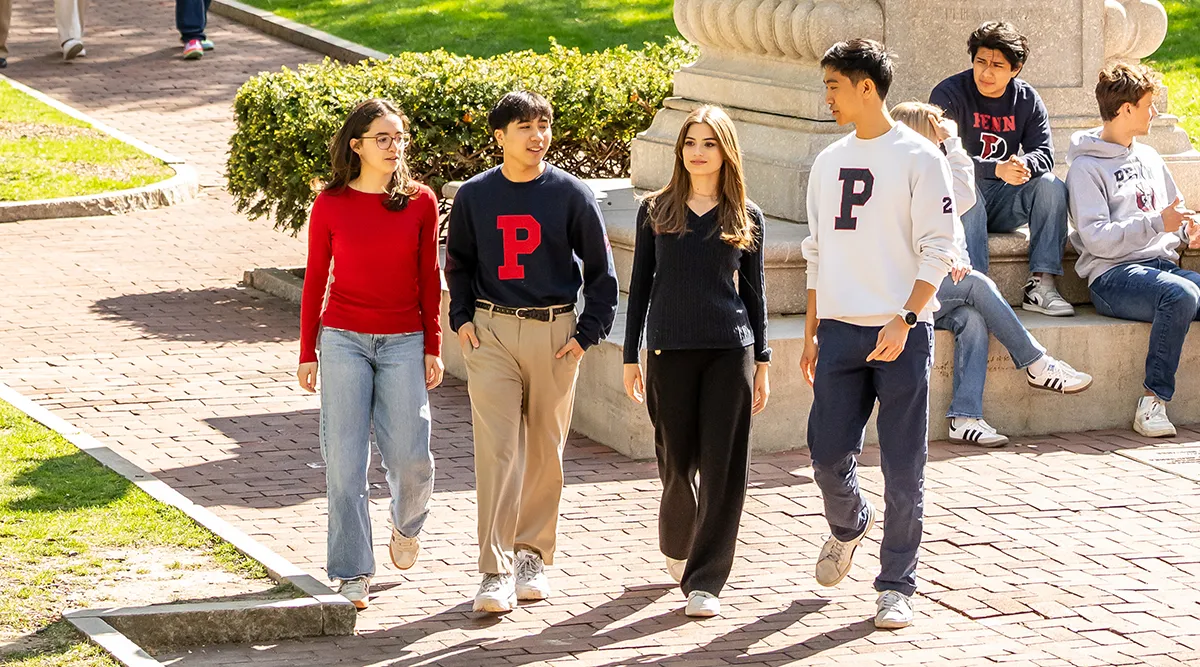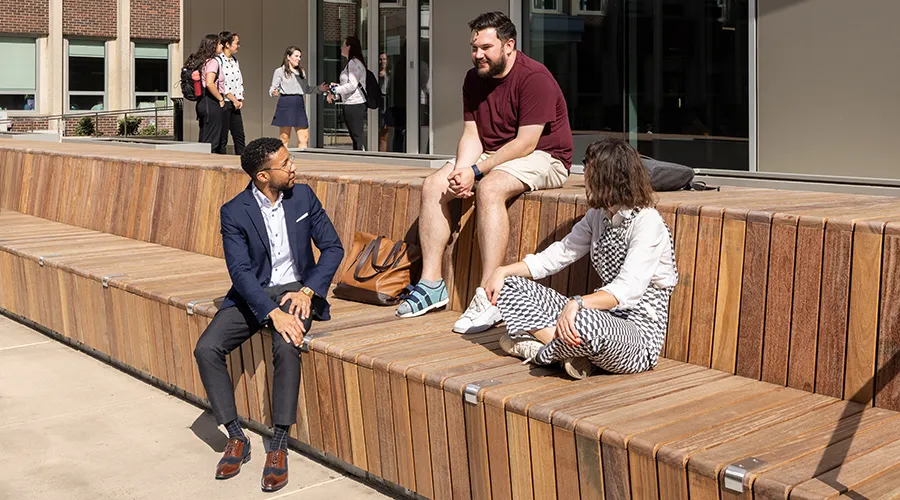The works of art in Penn’s collections are campus landmarks, points of meeting, symbols of an era, and, each and every one of them, gifts.
Framing Art at Penn
A collections director, curatorial and exhibitions director, and development director talk art
From the iconic Split Button to the powerful Brick House, about 60 public sculptures dot Penn’s 300 acres—a mere half percent of all the items in Penn’s art collection.
Considering all their angles are hundreds of students and arts professionals at Penn researching, studying, constructing, deconstructing, and reconstructing the meaning of art.
Among these professionals are Lynn Dolby, Director of the Penn Art Collection; Emily Zimmerman, Director of Exhibitions and Curatorial Affairs at the Arthur Ross Gallery and Guest Lecturer of the Spiegel-Wilks Seminar “Curating Contemporary Art”; and Jenny Laden, Director of Development for the Institute of Contemporary Art (ICA). All three sat down to talk shop.

How do you approach visual arts collection and display in your roles?
Jenny: I’ll go first, since the ICA is a unique case. We’re a kunsthalle, which means that we actually don’t collect art. We like to think of ICA as having a collection that ends up living elsewhere. Many of our shows can originate new works through commissions, and those commissions can go on to other museums or even be acquired by collectors or other institutions. Being a kunsthalle allows us to be nimble and to lean into the experimental part of our mission. It also allows artists, curators, and scholars to expand their practices—to explore new territories that they haven’t necessarily had the capacity, space, or resources to do.
A recent example was David Antonio Cruz’s show When the Children Come Home. Cruz is a multimedia artist, and the show was originally going to consist of only his paintings. He was interested in expanding his practice for this show with an installation. So, he brought it to us, and we looked at our budget for the show and calculated exactly how much more we would need for this incredible installation idea. Fortunately, a donor was able to meet that need, and David’s installation has now gone on tour to a few different museums.
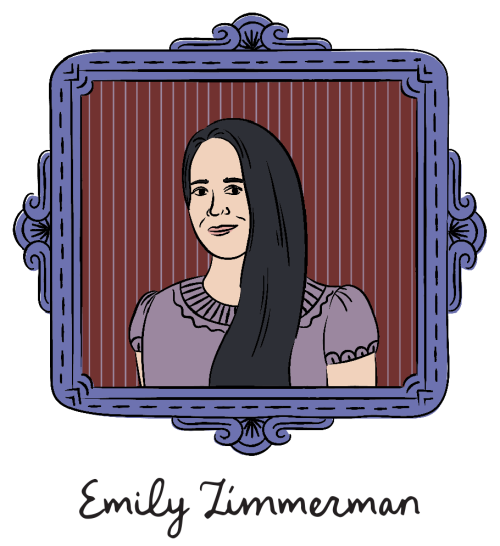 Emily: Being able to work with space is incredible, and teaching that to students is an enormous gift. My own graduate work was in philosophies of embodiment, and one of the things that attracted me to the curatorial profession is the ability to make arguments in space. Being able to make arguments through objects and their placement—as well as walls, colors, pedestals, and other elements of experience—is powerful. Sharing those tools with students is incredible, and they tie directly to many of the practical considerations of curation.
Emily: Being able to work with space is incredible, and teaching that to students is an enormous gift. My own graduate work was in philosophies of embodiment, and one of the things that attracted me to the curatorial profession is the ability to make arguments in space. Being able to make arguments through objects and their placement—as well as walls, colors, pedestals, and other elements of experience—is powerful. Sharing those tools with students is incredible, and they tie directly to many of the practical considerations of curation.
Lynn: “Considering practicalities” is a big part of how I think about how Penn’s monumental sculptures are displayed. A good example of this is Brick House, by Simone Leigh, a newer sculpture currently on loan and the promised gift from Glenn and Amanda Fuhrman. There was another sculpture in that location, Black Forest by Robinson Fredenthal. One of the first things we did was present the specs to the University Architect and landscape architect and ask, “Are there open spaces that can accommodate 6,000 pounds?” They gave us some renderings of potential sites, and we immediately agreed that such an important sculpture needs to have a prominent location.
We relocated Black Forest—it’s now next to Claudia Cohen Hall—and placed Brick House at 34th and Walnut. It’s a well-traveled area and a gateway where she’s visible not just to the Penn community but to our neighbors in West Philadelphia. If they’re lucky, a curator might move a monumental sculpture once in their career, maybe twice. In my seven years at Penn, I’ve done four or five major sculptures, which is a little mind-boggling!
What is most exciting in your work right now?
Emily: Sharing the philosophies of curating with the next generation is the most exciting part of my work. And one of the aspects of the Spiegel-Wilks Seminar that I particularly love is arranging conversations with curators from around Philadelphia. Students can see concrete examples of how this specific set of skills translates to the real world. Curating is very much a “learn by doing” profession: you need a lot of experience to accumulate a good toolkit. Those conversations with the curators are just so rich and deep. For example, Erica Battle from the Philadelphia Museum of Art has come and spoken, Rob Blackson from Art Philly, Kelly Schindler from the Pew Center—so, so many.
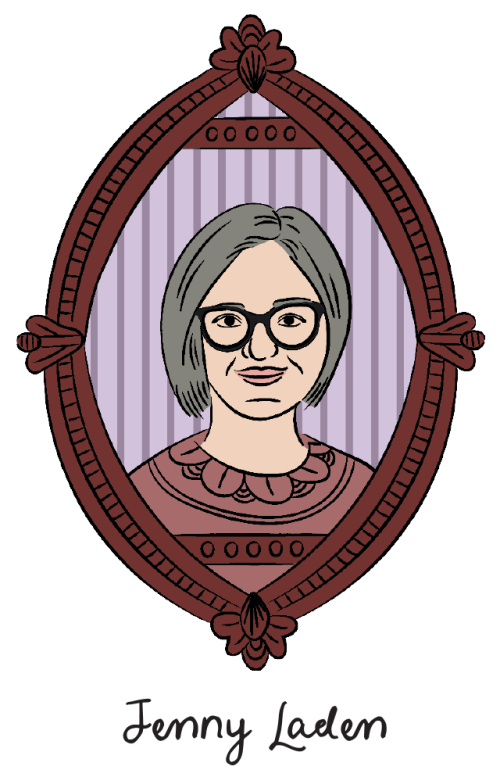 Jenny: One thing that really excites me is the people that I get to work with.
Jenny: One thing that really excites me is the people that I get to work with.
Everyone at ICA is incredibly dedicated and hardworking and very collaborative, and there’s a lot of joy here. I’m also excited by our donor base and our board, they are incredible—just so caring and supportive of people and art that’s experimental, that’s at the forefront, even if they aren’t yet a household name.
In terms of the shows, I’m very excited about the Mavis Pusey exhibition, coming in 2025, and I think it typifies ICA: a place that can do a deep dive into an artist’s practice and elevate or amplify work that hasn’t been recognized in the way that it should be. Warhol, Mapplethorpe—so many artists who showed at ICA early on really saw their careers blossom.
Emily: And curators—I had an early internship there.
Jenny: Exactly. And there are so many ways in which other parts of our culture look to contemporary art as a place that’s originating new work and amplifying underrecognized voices, bringing equity a little bit closer to where it should be. That’s what I love about working at ICA: it’s a place that’s doing important work.
Can you elaborate on the connection between visual arts and the non-art student experience at Penn?
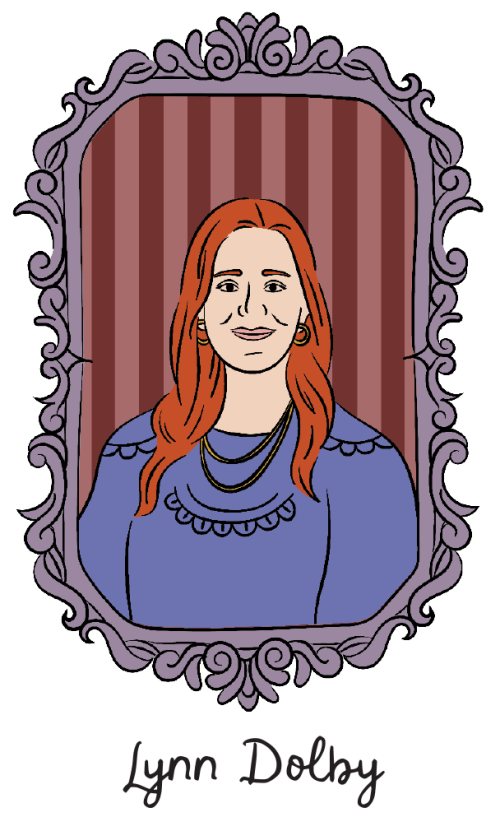 Lynn: I think that campus sculptures really create the life of the campus. They are meeting places, right? Everyone says, “Oh, I’ll meet you at the Button.” And they can be cornerstones of life events like graduations, memorials, or proposals. On Valentine’s Day, the LOVE statue has a table set out in front of it, and it’s plastered with notes, with beautiful messages that people write to one another. More than just being a backdrop to everyone’s daily walks, these sculptures are places where people make meaning and have relationships with one another. It’s an obvious part of the culture here.
Lynn: I think that campus sculptures really create the life of the campus. They are meeting places, right? Everyone says, “Oh, I’ll meet you at the Button.” And they can be cornerstones of life events like graduations, memorials, or proposals. On Valentine’s Day, the LOVE statue has a table set out in front of it, and it’s plastered with notes, with beautiful messages that people write to one another. More than just being a backdrop to everyone’s daily walks, these sculptures are places where people make meaning and have relationships with one another. It’s an obvious part of the culture here.
Emily: Students don’t need to be studying the arts to learn from the arts, have transformative experiences with art, or to apply lessons taken from the arts to their fields of study. There are countless, generative points of cross-pollination and influence between the arts and other fields of study. One example that comes to mind is how engaging with the arts engenders creative problem-solving. It’s a skill that’s as useful to engineers as it is to managing and leading teams.
Jenny: I think contemporary art can sometimes feel off-putting to people, so we really want to invite and welcome everyone in. We open our doors to hundreds of students each month from Penn and from around Philly, our student board is thriving, and we host programming that is free to all. Students enjoying coming to our annual dance, receptions, presentations—and especially our openings, which are always full of music, food, and joy. It’s a truly vibrant center for the Penn community.
The ICA transforms every few months, with each exhibition. And to have that kind of space for dialogue and beauty and curiosity and ideas, a space that is ever-changing, free to the public, and wants nothing more than people to just come in and experience what we’ve got? That’s a real treasure. [Laughs] I’ll shout that from the rooftops all day, because I do truly believe that.
 Interests: Criticism & curation
Interests: Criticism & curation
Recently moved by: Alain Resnais’s film Hiroshima, Mon Amour in cinema class. My passion for contemporary art stems from an upbringing immersed in the arts—from intricate stage designs to art galleries and museum galas. This year, I’m excited to integrate this passion at Penn through the ICA Student Board as I continue my studies in law.
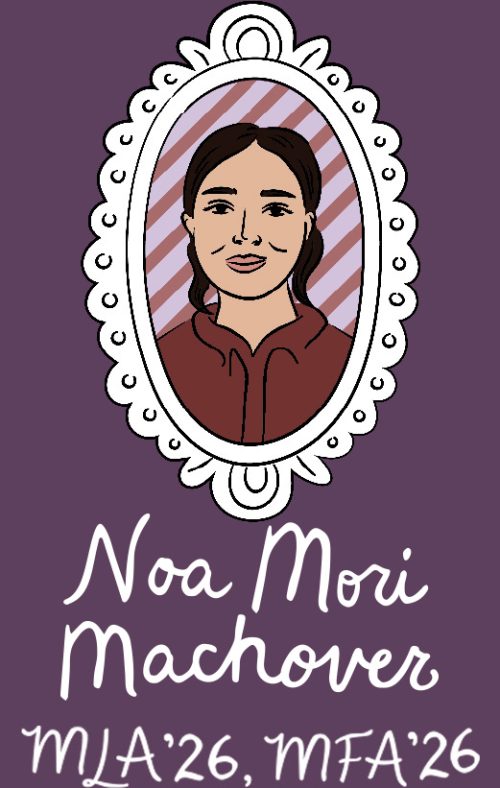 Interests: Interdisciplinary arts & criticism, with a curiosity and care for entanglements of ecology, technology, and diaspora
Interests: Interdisciplinary arts & criticism, with a curiosity and care for entanglements of ecology, technology, and diaspora
Recently moved by: The ICA’s incredible exhibitions, talks, and performances. One of my favorites was hearing gorgeous poetry from Kai Davis and Yolanda Wisher at the opening for Tomashi Jackson’s, Dominique White’s, and Alberta Whittle’s exhibitions. Being in Philadelphia also means many exciting contemporary artworks that we can engage with here or in New York City. But there’s much more spaciousness to reflect and slow down without the pressure of making our work too public too soon, which is essential in times of experimentation and transformation.
Interested in supporting Penn Collections, ICA, or the Arthur Ross Gallery? Contact Lynn Dolby, Jenny Laden, or Emily Zimmerman to learn more about ongoing priorities and initiatives.





